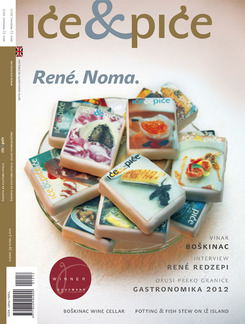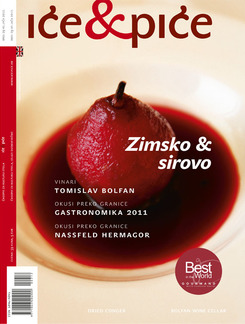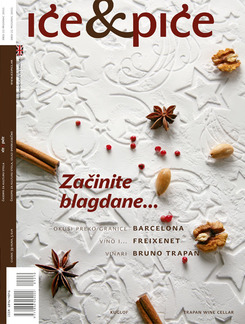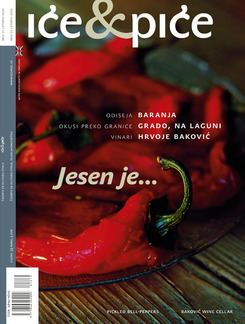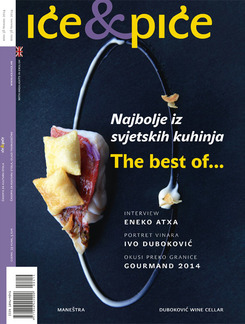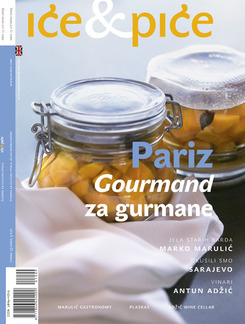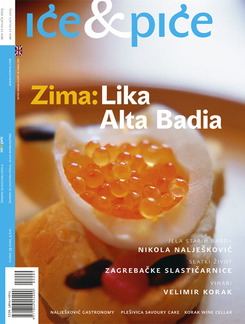To sail is necessary! Restlessness, curiosity and greed have always made people want to discover and conquer new worlds. But the new worlds are further away than one knows, and it’s easier to travel with bread in your tummy.
Baškot, baškotin, and dvopek… are names for various kinds of rusk and hardtack and biscuit and none of them came into being out of leisurely gourmet curiosity, but out of need, the desire to travel. The invention of army and navy bread, which could last centuries, which is how Pliny the Elder described rusk or hardtack, enabled people to travel further and come back more safely. Big history has recorded that the basic food of the Roman legions was dry double-baked bread (zwieback) or bis cotus (biscuit) , which, dunked in water, sustained the army that subdued half the then known world. When in 455 Rome fell, few could think about gourmet pleasures. Feeding once again overcame eating. The world gradually went back to illiteracy, and local, often inadequate, season-constrained cooking. It seemed for centuries that many of the arts of the kitchen had been lost forever. But some recipes endured, and culinary skill, even if severely curtailed, did survive, carefully preserved, behind the walls of the monasteries. Pilgrimage routes wound from monastery to monastery, where the weary traveller could always get refreshment and a bed. The cloister kitchens took care of the health and the good mood of all the religious. The Rule of St Benedict, which prescribed love of fasting and strict abstinence from all kinds of gluttony, was often and ingeniously circumvented, particularly the part of it which forbade the eating of the flesh of four-footed animals. The good appetite of the monks was often the target of scandal, but thanks to it the convent cooks saved the tastes of Greece and Rome, revived the old routes to the East, whence came the spices, they invented the pretzel, beer, soufflé and mortadella, brought exotic cuisines like the Chinese to Europe. A happy stomach has always created happy people, and if some monk or other were too tubby he could console himself with the idea of St Thomas Aquinas that fat people are smarter.
History of the nunnery stove
It is not accidental then that it was precisely in the Benedictine convent on the island of Pag that the old fashioned recipes for the preparation of rusk or hardtack or biscuit were preserved. The cloisters always cultivate a refined cuisine, and knowledge about the same, just as about farming and healing, was shared with the local community. Many famed drinks and dishes are linked with the monastic kitchens; we might mention just Rab Torte, or maraschino, the most familiar contributions of monks and nuns to the Croatian culture of the table. The Benedictine convent of St Margaret was at work on the island of Pag from the 15th century, and a century later, the nuns were looking after the education of girls. Today’s pride of Pag island, Pag lace, derived precisely from the convent, and then, through the work of the sisters, spread over the whole island. In the crowded history of this convent an item is registered that is important for this story about the bread that went around the world as a little but indispensable piece of home. In 1540 the convent got a new bread oven in the warm innards of which they thenceforth baked the golden, crunchy baškotin. It’s handed around today, in concert with wine or dessert wine, as an old fashioned treat, into which is woven the experience of at least three centuries. We can state with certainty that the art of preparation of baškotin on Pag derived from the nuns’ kitchen, and then, in the Renaissance, and when the new sea routes were started, spread even outside the walls of the convent. Created out of necessity and by ingenuity, Pag baškotin today is a tasty memory of a world that no longer exists. The recipe according to which the nuns of St Margaret today prepare this zwieback, unchanged and secret, remains as a reminder of the time of the square-rigger, of the departures and uncertain returns of sailors and seafarers.
Baškot, beskot, beškot… cake
Various recipes for the preparation of lasting ship’s biscuits are characteristic of the two sides of the Adriatic. In the various names and forms, zwieback that is prepared on both sides of the Adriatic the ring-shaped baškot that is prepared in the Kvarner area stands out. According to tradition it arrived together with the fishermen from Veneto. Bakar, once a very important seafaring and trading city, still preserves the tradition of preparing this very baškot, and over the course of time the preparation of it spread to the area in the inland hills, where it found a place for itself in the humble diet of herdsman and farm labourers, all of those who worked far from the comforting warmth of the family hearth. The ring shape of the baškot, which is the main difference between it and the baškotin prepared on Pag or Rab, enables it to be transported and carried easily. The ships’ pantries could easily store the rings of baškot hung on rope, which would usually be suspended from the ship’s timbers. Dry baškot could last up to half a year, and would usually be eaten dunked in water, wine or soup. Bakar people say that baškot is best when it’s chucked from a height and shatters into pieces. This brittle, annular bread was not just food, it was a taste of home, a materialisation of love and of the fear with which the return from the cruel and temperamental sea was awaited. Transformed into various forms like baškotin and škanatica that are like biscuits (British meaning) to which flakes of almonds are sometimes added, or the ring-shaped baškotin or the bucolaj that is its immediate descendant, twice-baked breads reveal the common past of the Mediterranean as it once was.
.jpg?1413892352)



